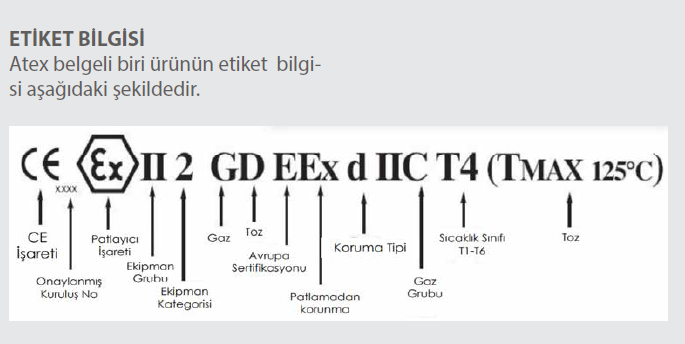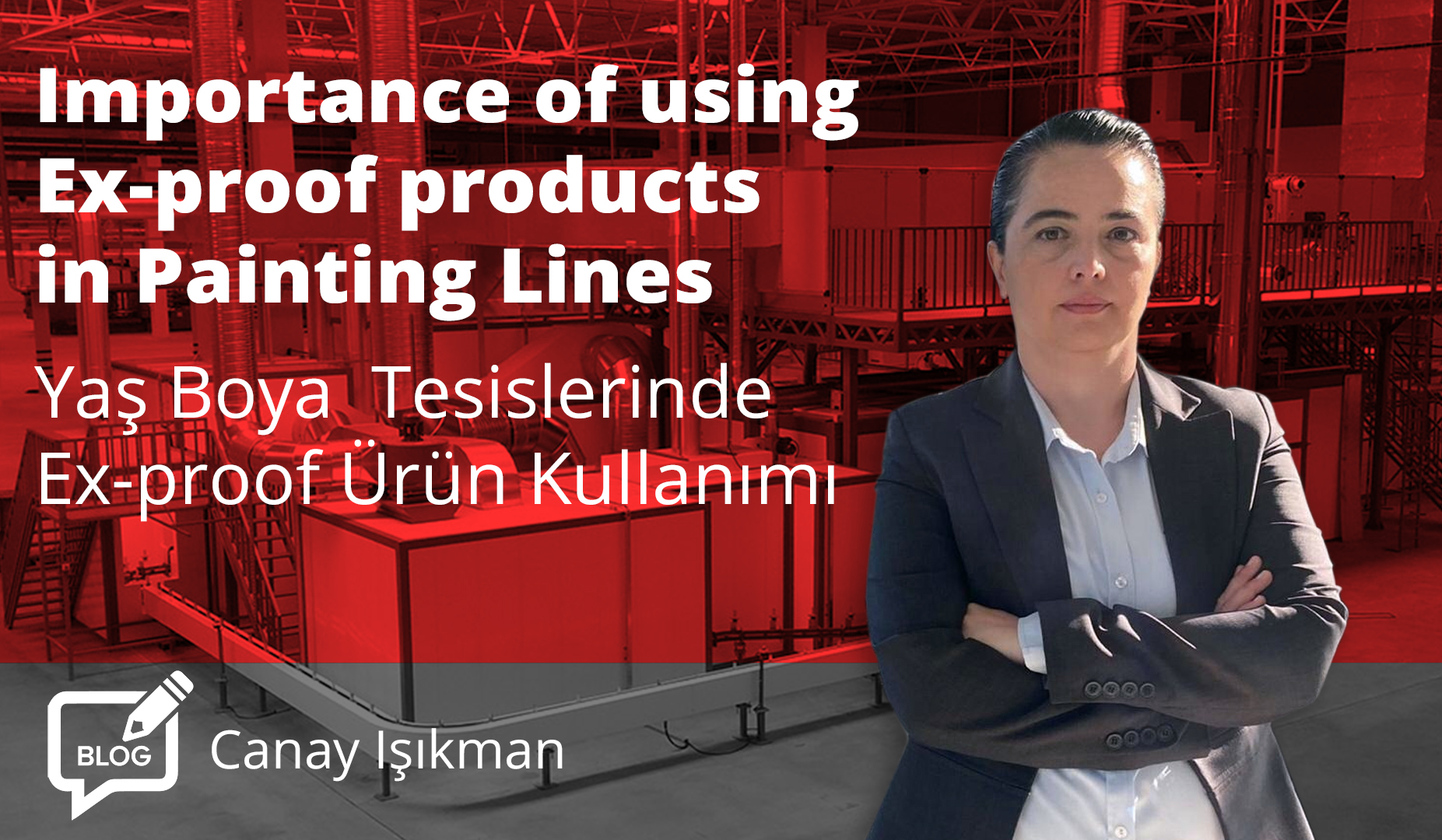Before discussing the importance of using ex-proof products in wet paint plants, it is useful to explain what the words ex-proof and ATEX mean:
Before discussing the importance of using ex-proof products in wet paint plants, it is useful to explain what the words ex-proof and ATEX mean:
Ex-proof is the shorter version of “Explosion Proof” and ATEX is combined from the first two syllables of the French word “ATmosphéresEXplosives” and means Explosive Atmospheres. Ex-proof materials must be ATEX certified.
The first ATEX instructions were published in 2003 in the European Union. In 2007, it was standardized worldwide as IEC-Ex. The latest published standard is IEC 60079-101-2015.
Paint and thinner used in wet paint facilities are defined as explosives. Therefore, ATEX certification has become important in recent years. By using the Ex-proof product, a possible explosion and subsequent fire starting are prevented. Many fires started with only a small spark. To ensure occupational health and safety, risk analysis of the dangers that may occur in the working environment should be done. Then the risks should be eliminated. By the measures taken to ensure occupational safety, the worker, the enterprise, and the workplace are protected.
There is a material safety chart (MSDS: material safety data sheet) containing the safety and health information of the paint and thinner used in wet paint facilities. The MSDS document contains warnings about the healthy use of these substances, as well as information on flare and explosion.
The question of “What is Hazardous Zone Classification?” is the question we encounter the most.
The hazardous zone definition (zone distinction) is left to the employer by article 6 of ATEX 137 (ATEX 1999/92 / EC) or “regulation on the protection of workers from the dangers of explosive environments.” To summarize the zone definitions:
Zone 0 (Zone / Generation): It is the place where the explosive atmosphere consisting of the mixture of flammable substances in the form of gas, vapor and fog with air continuously or for a long time or frequently.
Zone 1 (Zone / Generation): It is the place where the explosive atmosphere consisting of the mixture of flammable substances in the form of gas, vapor, and fog with air may occur occasionally under normal working conditions.
Zone 2 (Zone / Generation): Places where flammable substances in the form of gas, vapor, and fog are mixed with air and are not likely to form an explosive atmosphere under normal working conditions, or where the explosive atmosphere is permanent for a very short time if such a possibility exists.
If Wet Paint is applied in a booth, the interior of the booth can be considered as zone 1. If the paint application is not done in a closed booth, the region where the paint is applied can be considered as zone 1 and the area 1 meter away from the paint application can be considered as zone 2. Zone distinctions can also be made according to the LEL(Lower Explosive Limit) level, and places with over 50% LEL are defined as Zone 1.
Electrical products in wet paint booths must be ex-proof featured and have an ATEX certificate in accordance with zone 1 class. Especially the lighting, sockets, on-off buttons inside the paint booth are into this class of electrical products.
Wet paint guns should also be ATEX certified. Besides, exhaust fans should be ex-proof in order to prevent friction and sparking.
The electrical panel also should be ex-proof featured or be outside the hazardous zones.
If worker elevator lift is used in the paint booth, it should be ex-proof certified or pneumatic lift should be used.




 TR
TR EN
EN